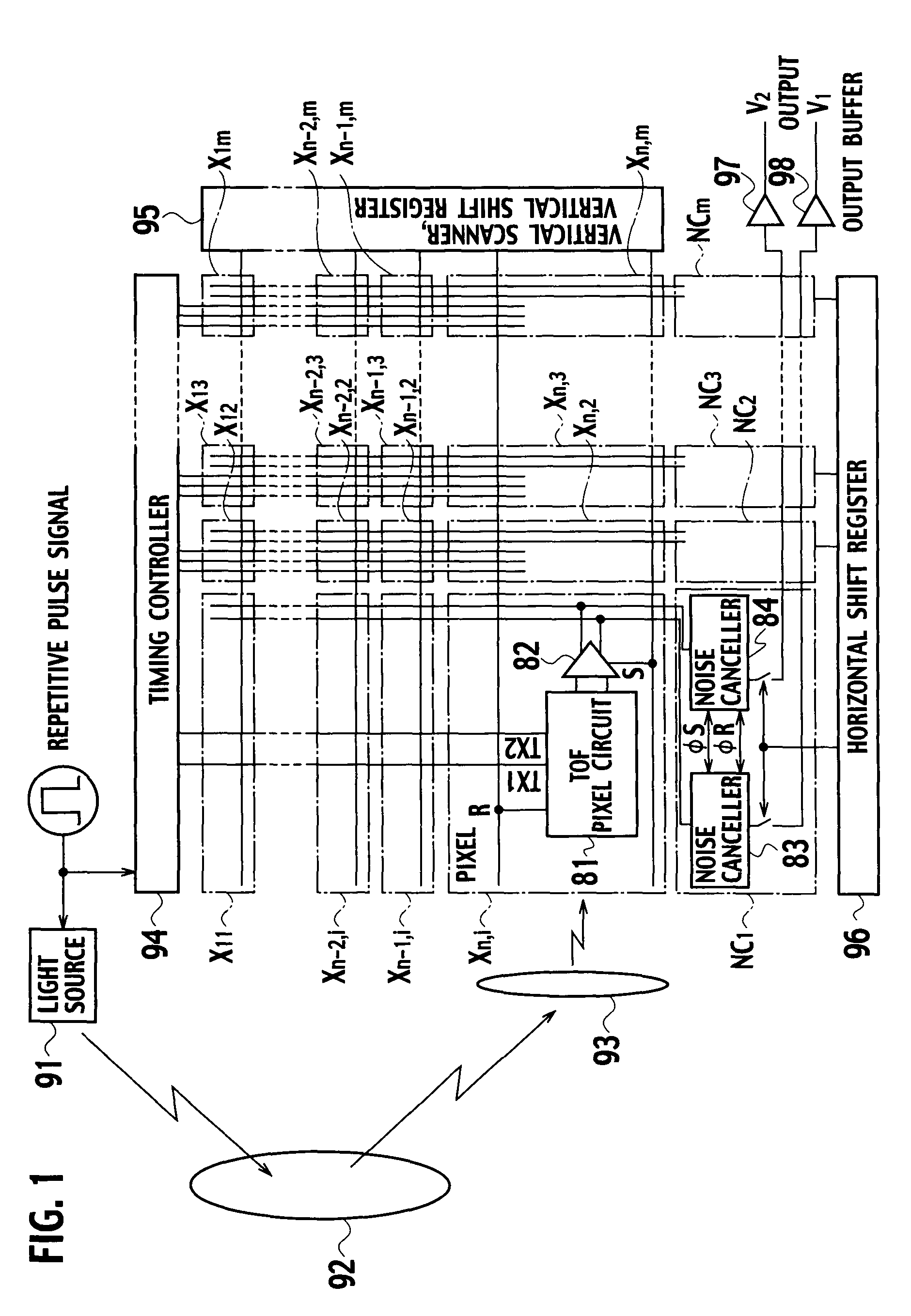Semiconductor range-finding element and solid-state imaging device
a solid-state imaging and semiconductor technology, applied in the direction of radiation control devices, distance measurement, instruments, etc., can solve the problems of poor thermal stability on the interface with poly-crystal silicon, sub>5 /sub>o/sub>3 /sub>, and the use of various insulating films other than silicon oxide films is not inhibited, so as to achieve high distance resolution, reduce cost, and speed up the effect of speed
- Summary
- Abstract
- Description
- Claims
- Application Information
AI Technical Summary
Benefits of technology
Problems solved by technology
Method used
Image
Examples
first embodiment
[0031]In a solid-state imaging device (two-dimensional image sensor) according to the first embodiment of the present invention, as shown in FIG. 1, pixel arrays (X11 to X1m, X21 to X2m, . . . Xn1 to Xnm) and peripheral circuits (94, 95, 96, and NC1 to NCm) are integrated on a same semiconductor chip. A large number of pixels Xij (i=1 to m, j=1 to n, and the m, n are integers, respectively) are two-dimensionally arrayed in the pixel arrays, and a rectangular imaging region is implemented. Then, the timing controller 94 is installed on the upper side of this pixel array, and the horizontal shift register 96 is installed on the lower side, respectively along pixel rows X11 to X1m, X21 to X2m, . . . , Xn1 to Xnm directions. On the right side of the pixel array, a vertical shift register and a vertical scanner 95 are installed along pixel columns X11 to Xn1, X12 to Xn2, . . . , X1j to Xnj, . . . X1m to Xnm directions. As illustrated an inner structure in the pixel Xnj, each pixel Xij em...
second embodiment
[0069]The entire organization of the solid-state imaging device (two-dimensional image sensor) according to the second embodiment of the present invention is equivalent to the block diagram shown in FIG. 1. Thus, the overlapping or redundant description is omitted. Also, the planar configuration of the semiconductor range-finding element serving as the TOF pixel circuit 81 assigned in each of the pixels X11 to X1m, X21 to X2m, . . . , Xn1 to Xnm in the solid-state imaging device according to the second embodiment is similar to FIG. 2, which has been shown as one example of the planar configuration of the semiconductor range-finding element according to the first embodiment. Hence, the overlapping or redundant description is omitted.
[0070]FIG. 10 is the cross-sectional structure of the semiconductor range-finding element, which has been shown in FIG. 2. Similarly to the semiconductor range-finding element according to the first embodiment, the structure embraces a semiconductor subst...
PUM
 Login to View More
Login to View More Abstract
Description
Claims
Application Information
 Login to View More
Login to View More - R&D
- Intellectual Property
- Life Sciences
- Materials
- Tech Scout
- Unparalleled Data Quality
- Higher Quality Content
- 60% Fewer Hallucinations
Browse by: Latest US Patents, China's latest patents, Technical Efficacy Thesaurus, Application Domain, Technology Topic, Popular Technical Reports.
© 2025 PatSnap. All rights reserved.Legal|Privacy policy|Modern Slavery Act Transparency Statement|Sitemap|About US| Contact US: help@patsnap.com



